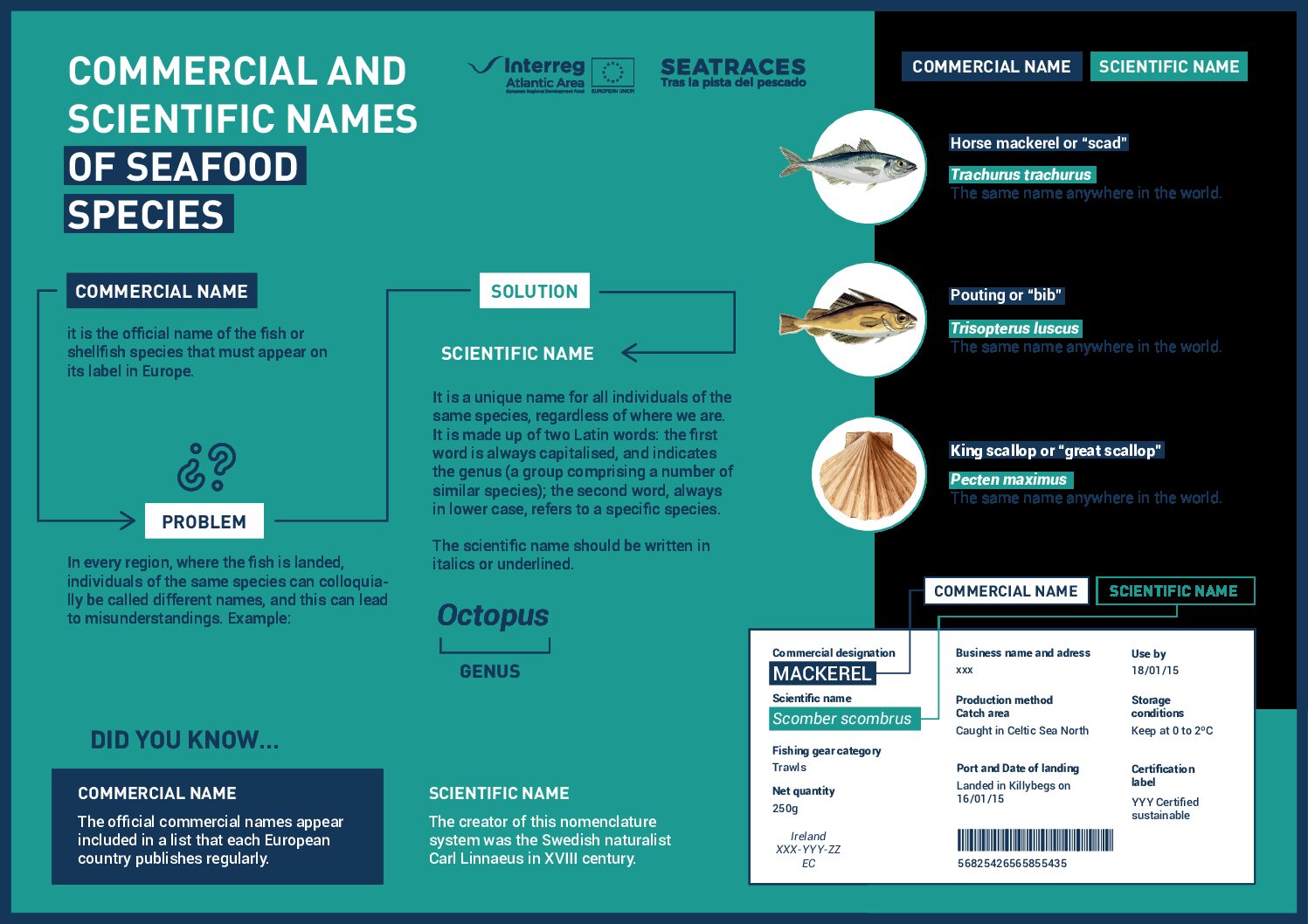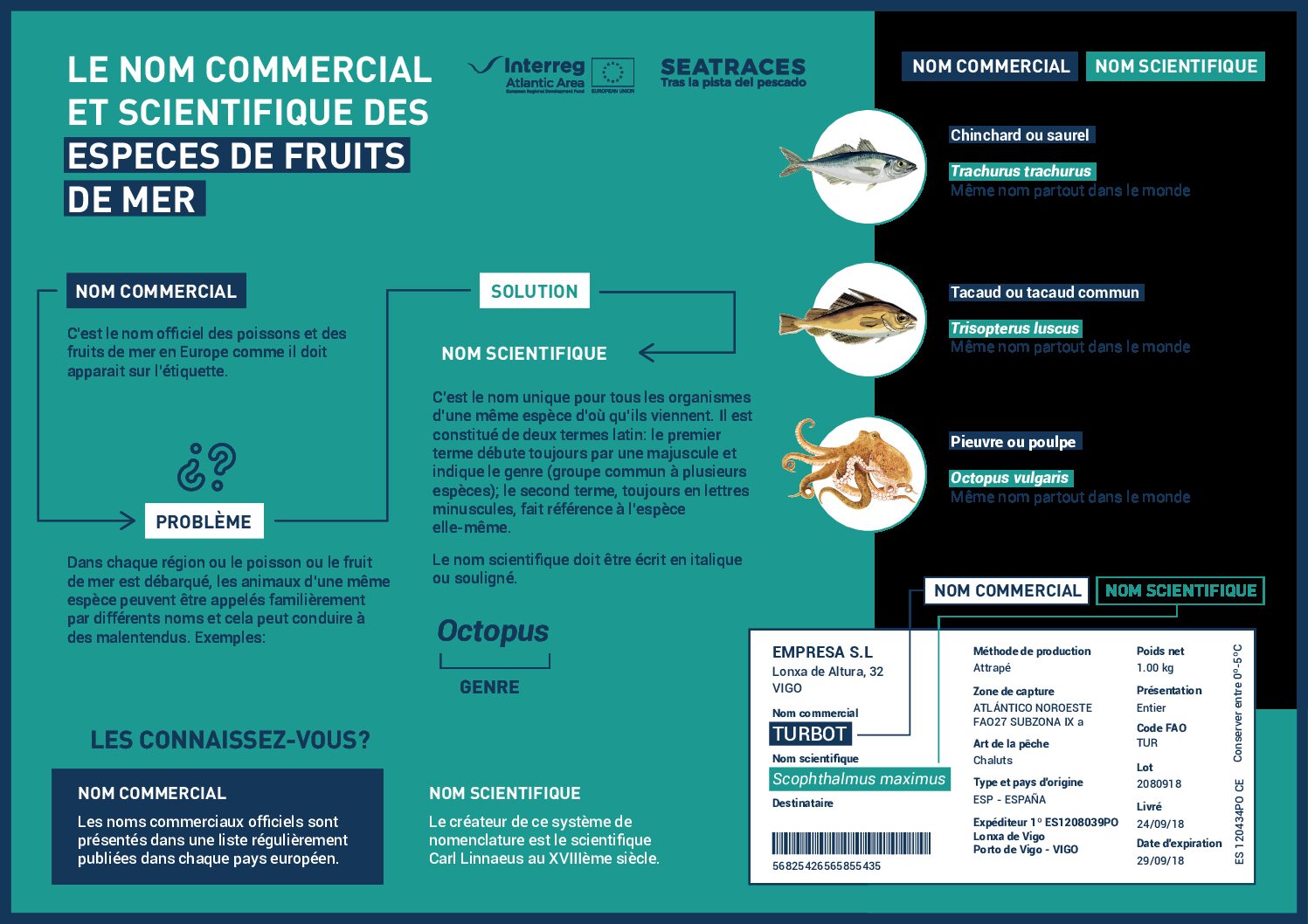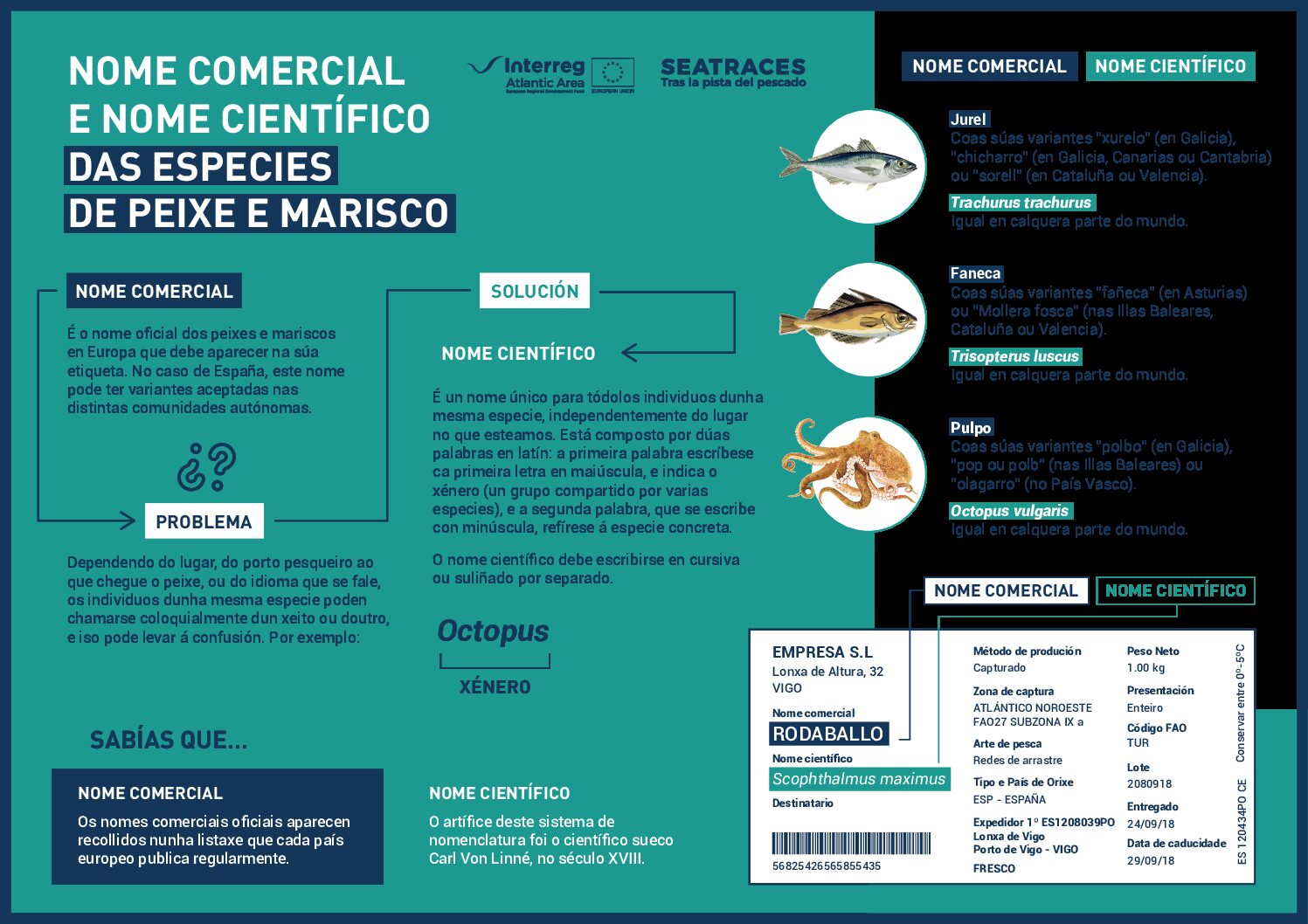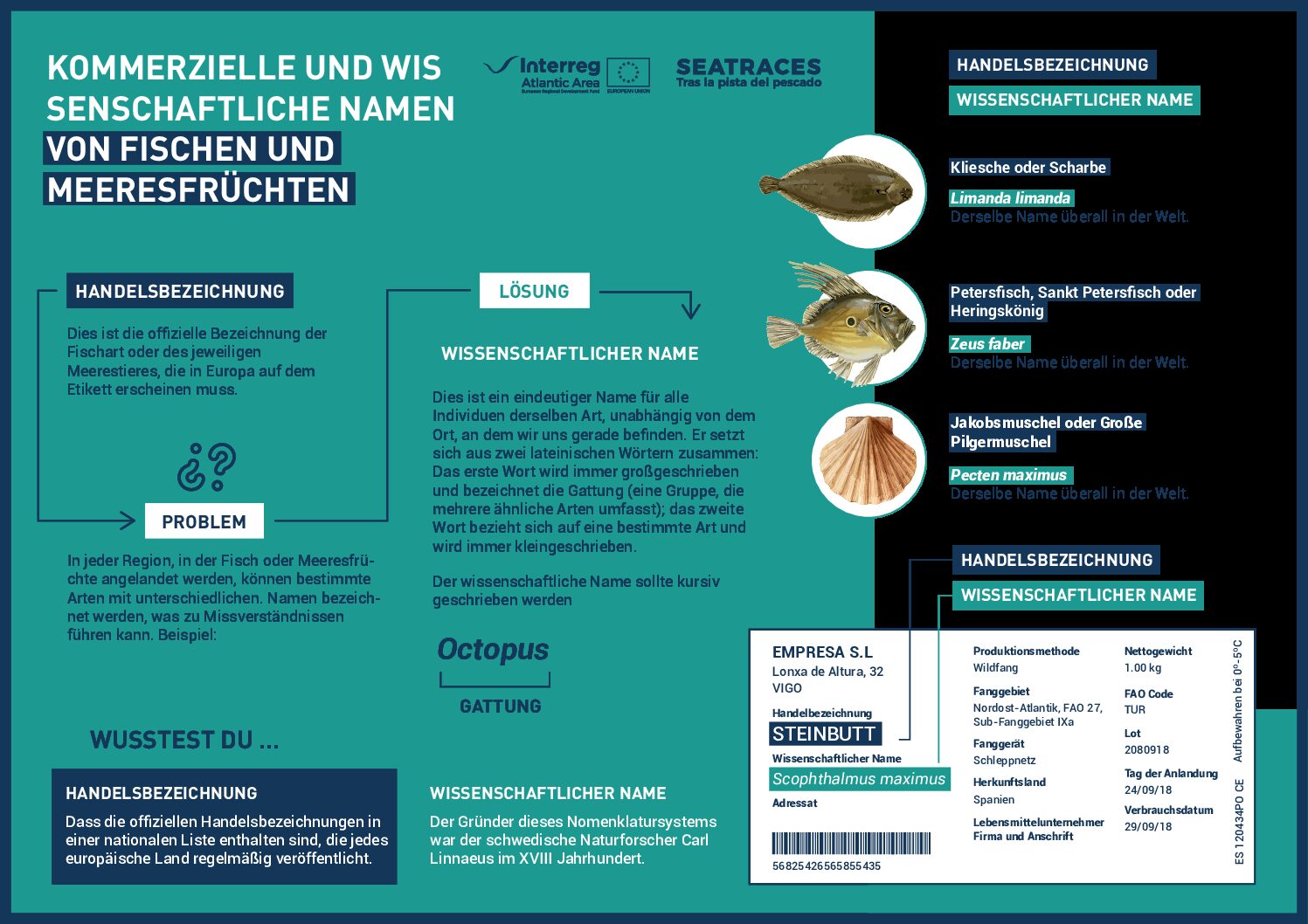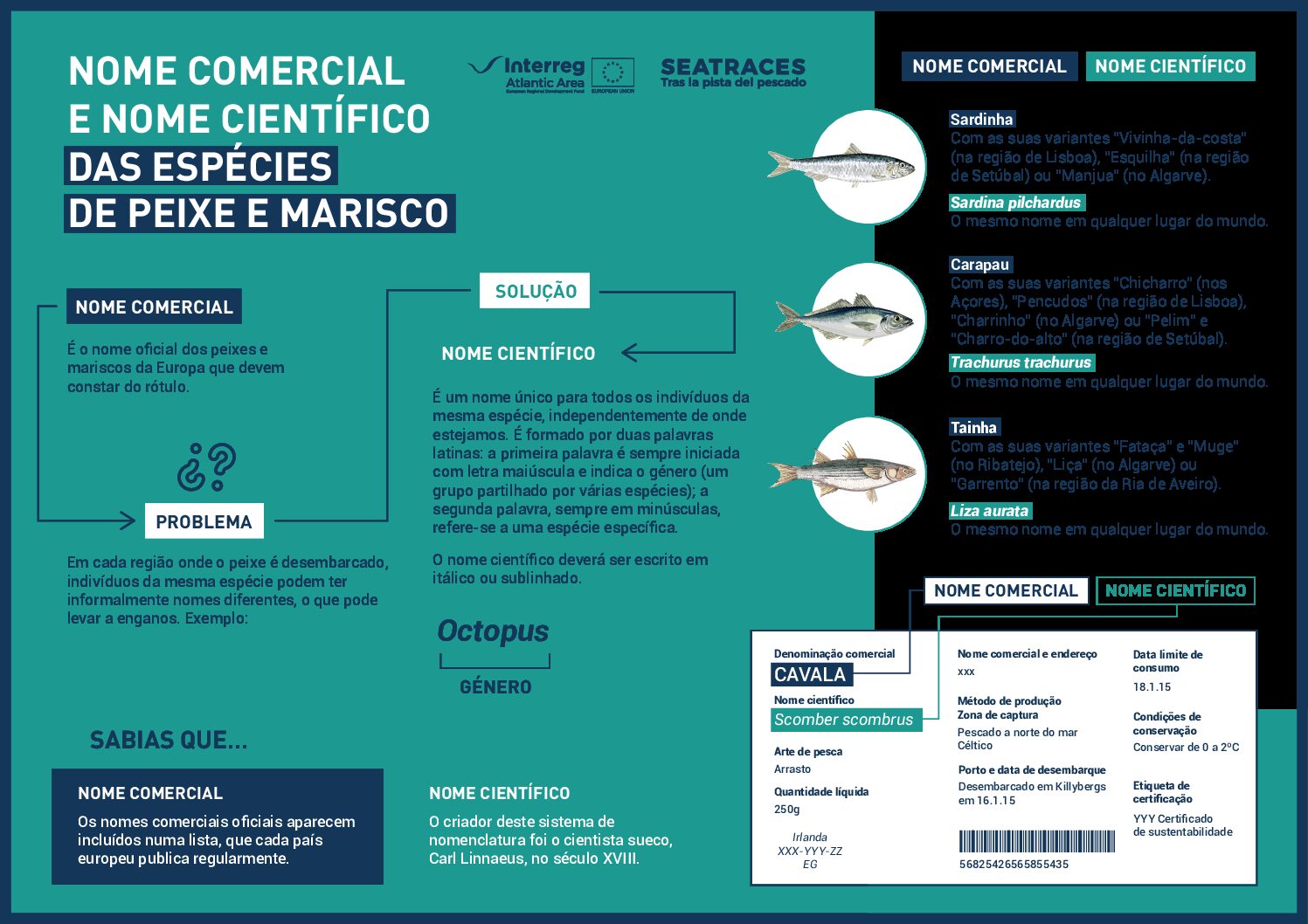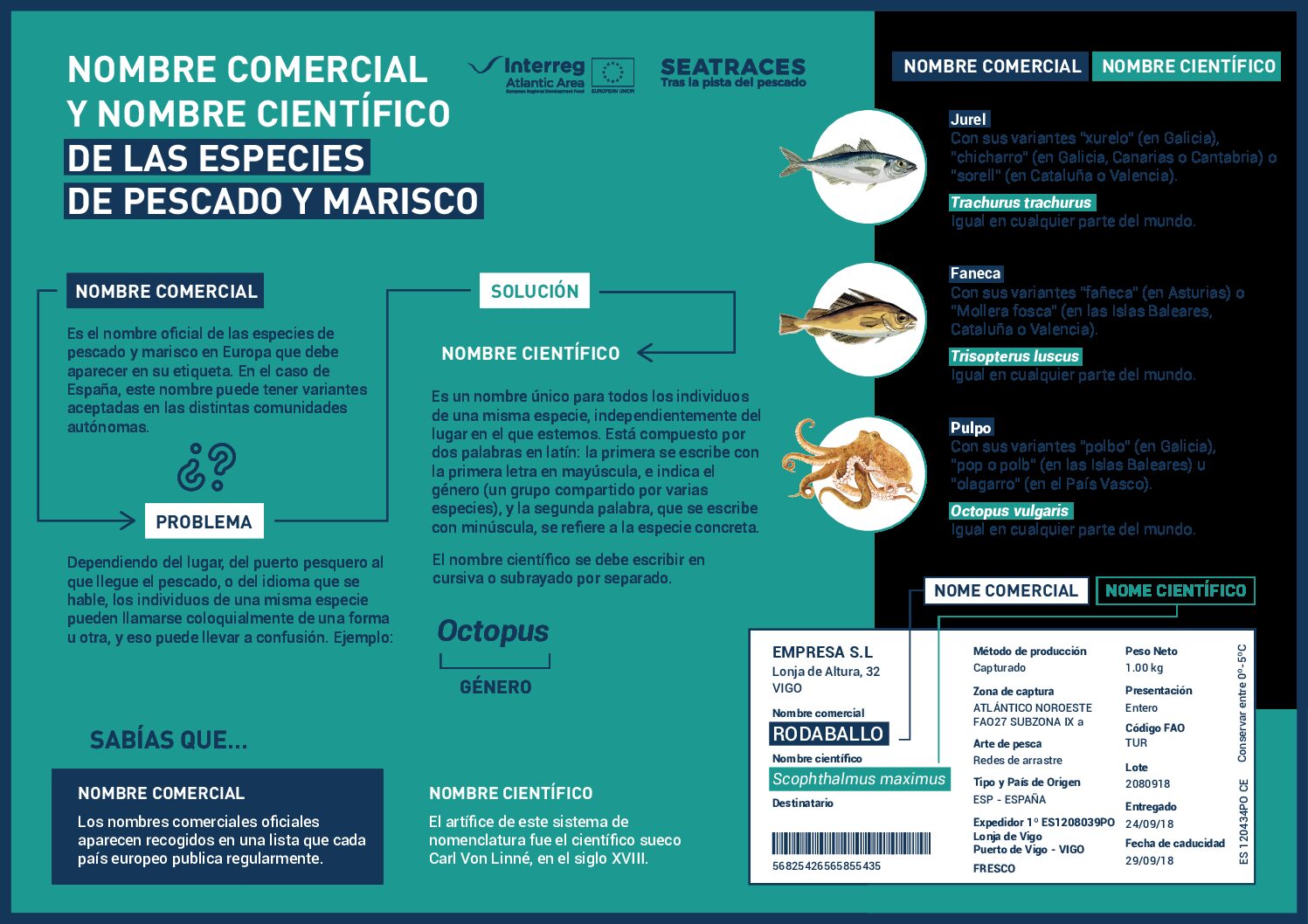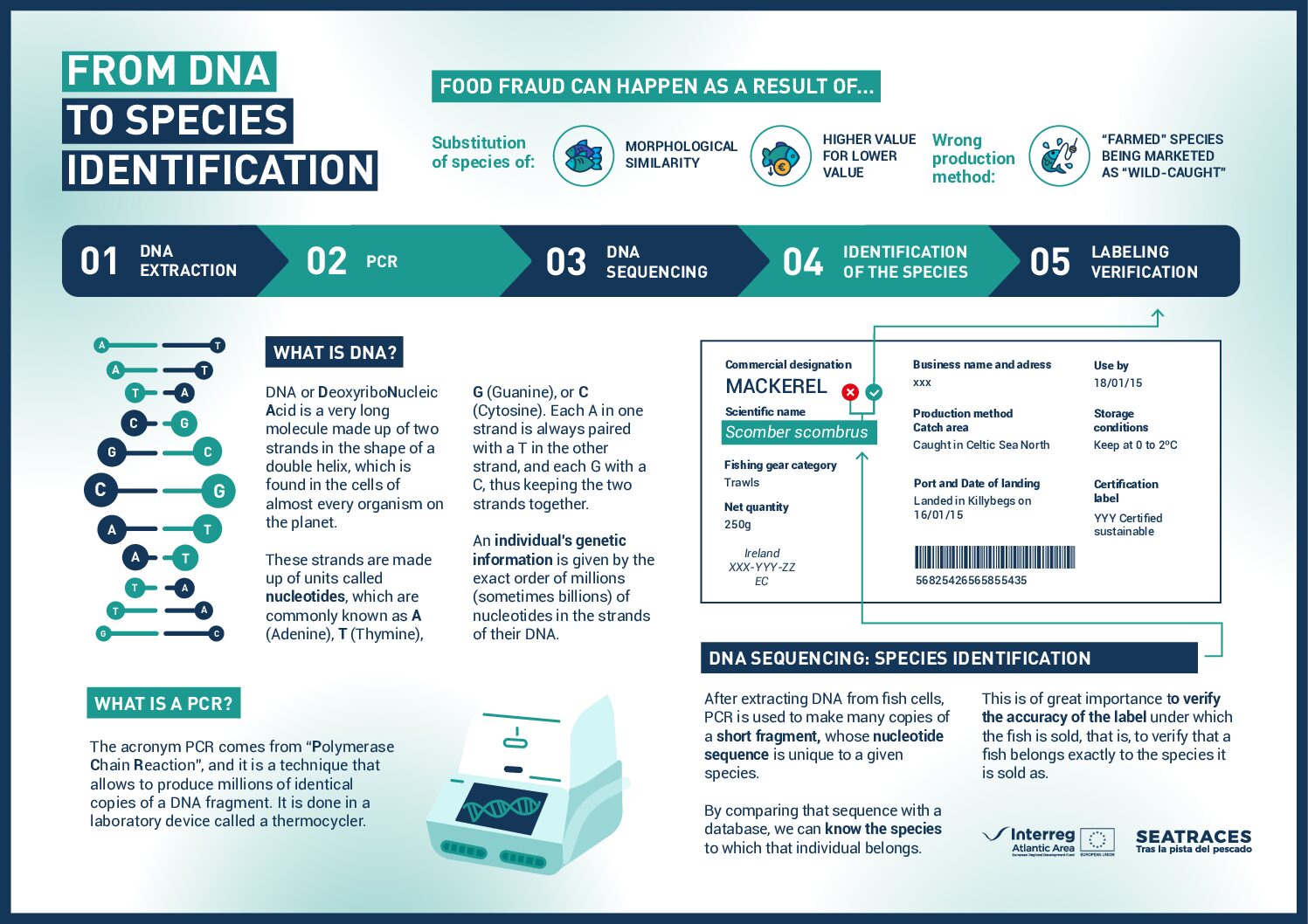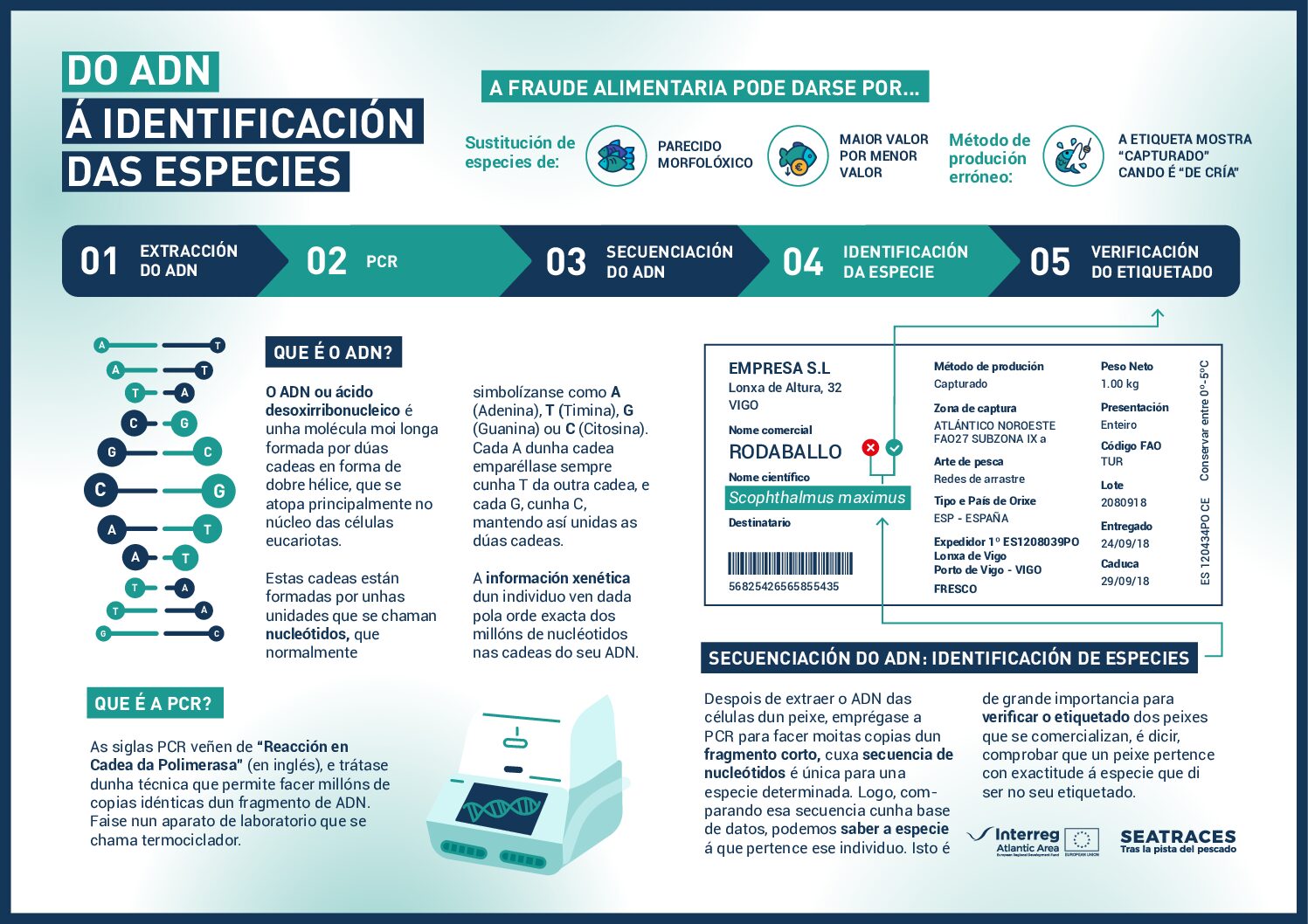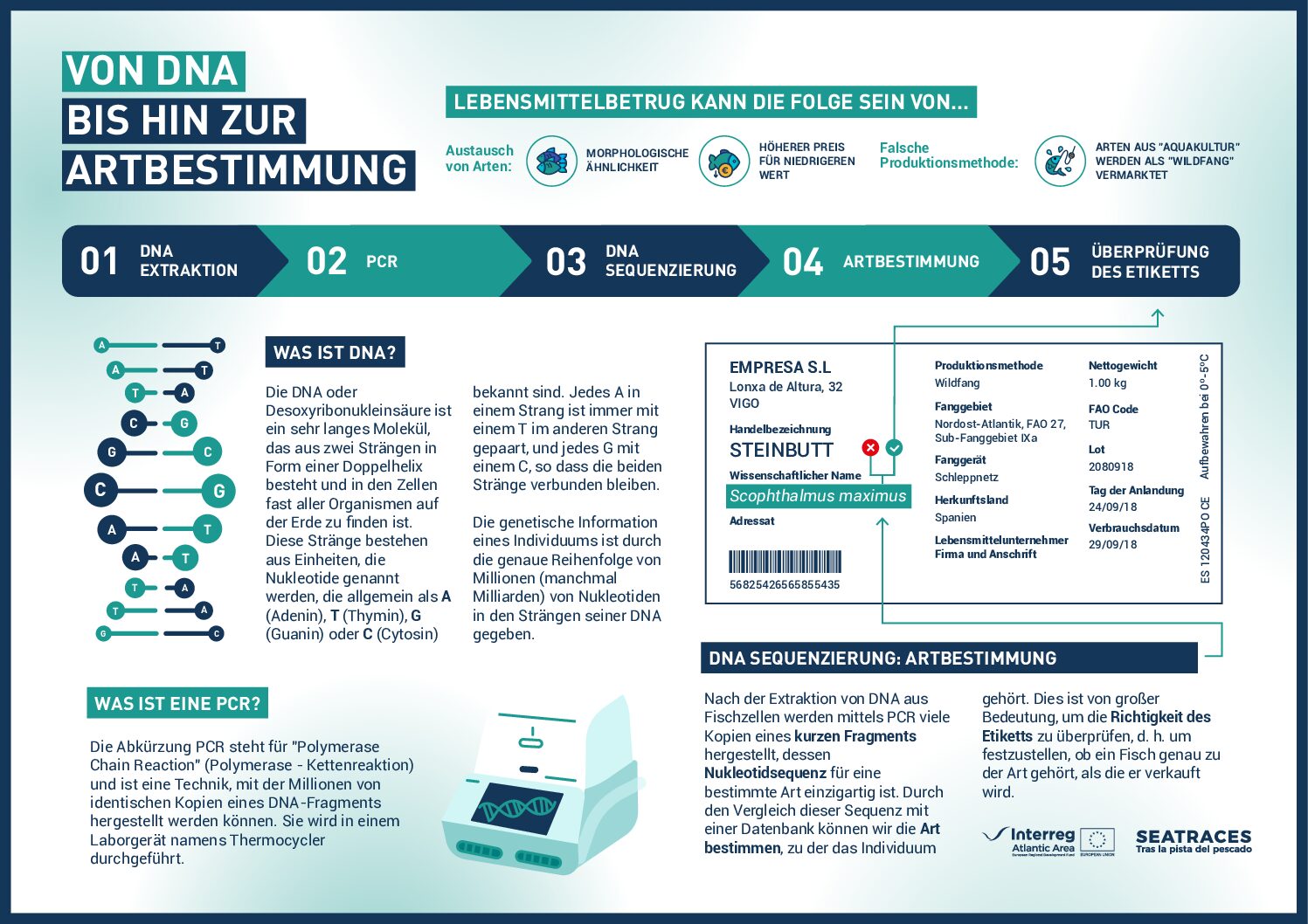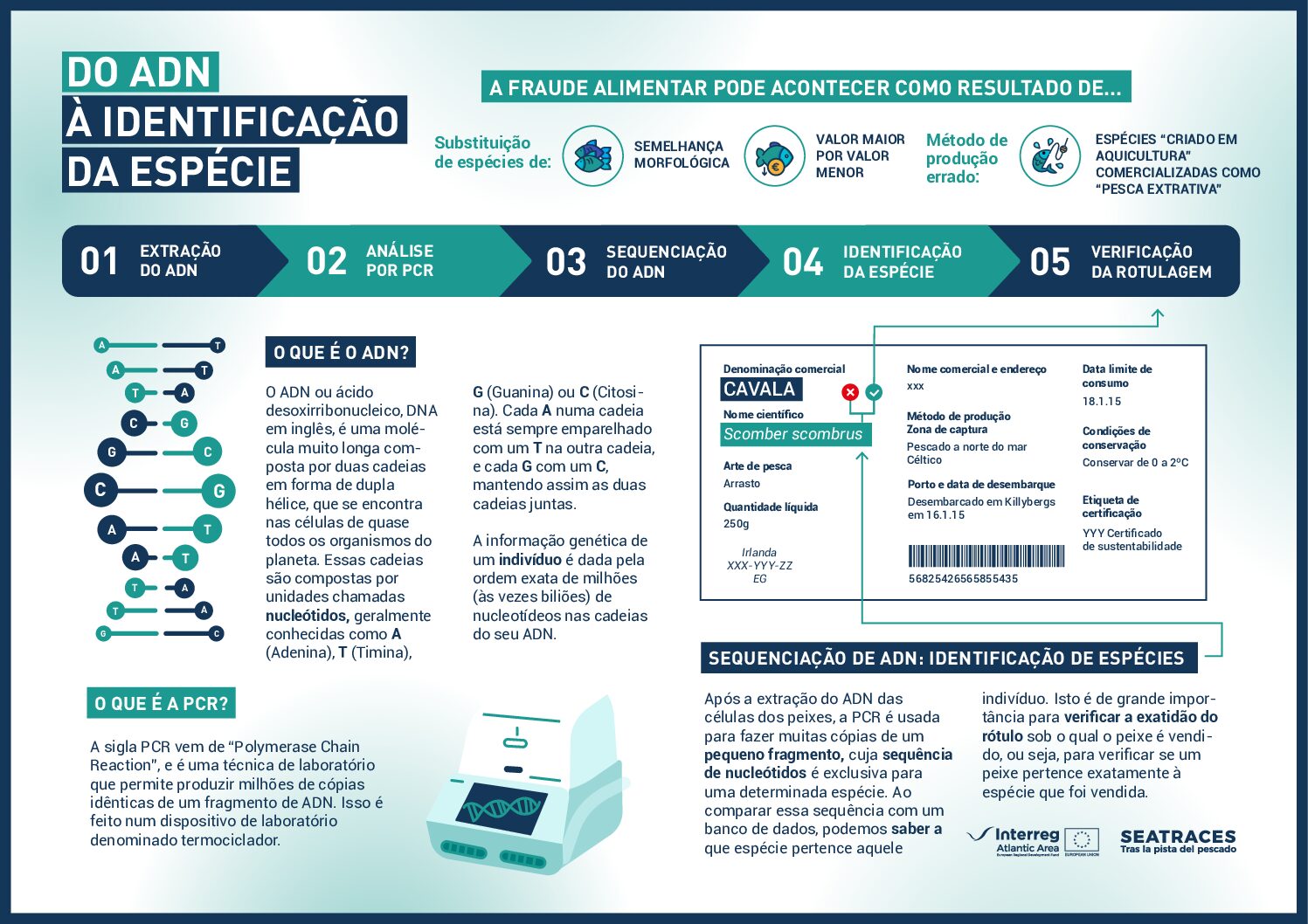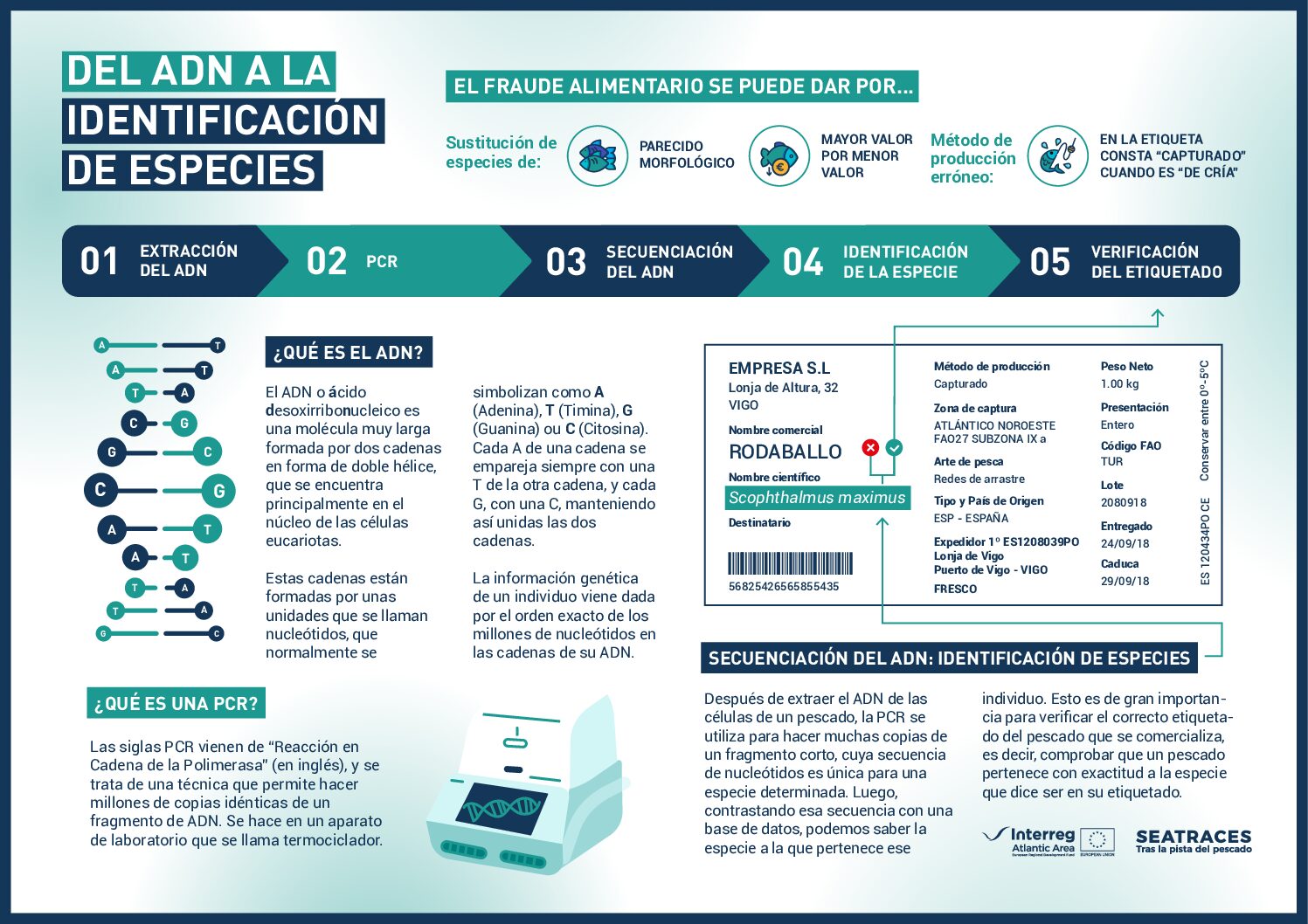
SEATRACES is a research project aimed at safeguarding and promoting the Atlantic Area´s fisheries and aquaculture. Recognizing that today’s children will shape the future of consumption, it becomes imperative to provide them with knowledge about diverse seafood species, accurate labeling practices, and the methodologies for identifying fish species within laboratory settings. The ultimate aim is to cultivate an understanding of responsible consumption that contributes to preserving our seas and oceans’ resources.
To aid in this educational endeavour, we offer two informative infographics available for viewing and download in six languages: English, Portuguese, French, German, Galician, and Spanish. These resources are designed not only for science classes but also to complement language lessons.
The first infographic elucidates the disparities between the commercial and scientific nomenclature of seafood species, emphasizing the significance of transparent and accurate labeling practices. This resource aims to highlight the importance of truthfulness in labeling information, thereby empowering consumers to make informed choices that contribute to the protection of our marine ecosystems.
The second infographic addresses the fraud detection process, the analytical stages involved in the determination of compliance with labeling regulations, and whether the species indicated in the label correspond with the DNA analysis results. To this end, the following steps are performed: DNA extraction, Polymerase Chain Reaction (PCR), DNA sequencing, and species identification. This emphasizes the importance of using objective analytical tools for the evaluation of legal requirements of the seafood present in the market.

This material has been produced by SEATRACES team:
Graciela Ramilo-Fernández1, Stefano Mariani2, Rogério Mendes3,4, Bárbara Teixeira3,4, Françoise Denis5, María Andrade Delgado6, Miguel Ángel Pardo7, Ute Schröder8, Regina Klapper9, and Carmen González Sotelo1
1 Instituto de Investigaciones Marinas – CSIC, Eduardo Cabello 6, 36208 Vigo, Spain
2 School of Biological and Environmental Sciences, Liverpool John Moors University, Liverpool, UK
3 Portuguese Institute for the Sea and the Atmosphere, IPMA I.P, Portugal
4 Interdisciplinary Center of Marine and Environmental Research (CIIMAR), University of Porto, Rua das Bragas 289, 4050-123 Porto, Portugal
5 Muséum National d′ Histoire Naturelle, Station Marine de Concarneau, France
6 Muséum National d′ Histoire Naturelle, 57 rue Cuvier, 75005 Paris, France
7 AZTI, Food Research, Basque Research and Technology Alliance (BRTA), Parque Tecnológico de Bizkaia, Astondo Bidea, Edificio 609, 48160 Derio, Spain
8 Max Rubner-Institut, Federal Research Institute of Nutrition and Food, Department of Safety and Quality of Milk and Fish products, Palmaille 9, 22767 Hamburg, Germany
9 Max Rubner-Institut, Hermann-Weigmann-Str. 1, 24103 Kiel, Germany
